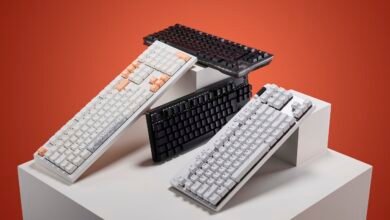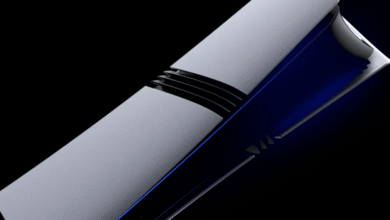Best of IFA 2025: Top Laptops, Monitors & Gaming Handhelds

▼ Summary
– IFA 2024 showcased innovative PC hardware and platforms, including Intel’s Lunar Lake and Qualcomm’s Snapdragon X Plus chips, expanding beyond its traditional focus on appliances and home tech.
– Lenovo’s ThinkBook VertiFlex Concept features a rotating screen that can switch between landscape and portrait modes, offering improved ergonomics for different tasks.
– Acer’s Predator X27U F8 monitor achieves a 720 Hz refresh rate at 720p resolution and 540 Hz at native 1440p, using an advanced OLED panel.
– The Acer Swift 16 AI laptop is one of the first to feature Intel’s Panther Lake processor and includes a large haptic touchpad with stylus support.
– New gaming and productivity devices were highlighted, such as the Lenovo Legion Go 2 with upgraded controllers and battery, and Anker’s 14-port Prime Docking Station with extensive connectivity options.
While IFA in Berlin traditionally showcases home appliances and audio gear, this year’s event proved it’s also a major stage for innovative computing and gaming hardware. From flexible laptops to blisteringly fast monitors, the show offered a compelling look at the future of personal technology, blending performance with practical design.
Our team explored countless demos across the exhibition halls, encountering everything from rotating laptop displays to gaming handhelds built for both work and play. We also saw monitors that redefine speed and color accuracy, alongside charging solutions that simplify life on the go.
Artificial intelligence remained a dominant theme, integrated into products as varied as laptop docks and home appliances. While the buzz around AI was impossible to ignore, the real excitement came from tangible, forward-thinking hardware that offered a glimpse into what’s coming next.
Here’s a closer look at some of the standout products we encountered.
Lenovo’s ThinkBook VertiFlex Concept introduces a screen that physically rotates between landscape and portrait orientation. This isn’t just a gimmick, it’s a functional design aimed at improving ergonomics for tasks like coding or document editing. When you need a wider view for media or gaming, simply twist it back. The mechanism feels sturdy and intuitive, suggesting this concept could soon become a production reality.
Baseus unveiled the EnerGeek GT01, a clever two-in-one charging gadget that merges a 45W GaN wall charger with a 10,000mAh Qi2 wireless power bank. Magnetic attachment holds the pieces together, and a small OLED screen displays charging status. While it’s compact enough to fit in a pocket, the ability to charge multiple devices simultaneously makes it ideal for travelers. A higher wattage version would be even more versatile, but this is already a smart consolidation of tech essentials.
Acer’s Predator X27U F8 monitor pushes OLED refresh rates to new heights, reaching 540 Hz at 1440p, a notable jump for OLED displays. If you’re willing to drop resolution to 720p, that figure climbs to an astounding 720 Hz. This kind of performance demands top-tier PC hardware, and with a price tag of $1,299, it’s aimed squarely at competitive gamers who refuse to compromise.
Another surprise from Acer was the Swift 16 AI, one of the first laptops shown with Intel’s upcoming Panther Lake processors. It features a 3K 120Hz display and what Acer claims is the world’s largest haptic touchpad, complete with stylus support. With Wi-Fi 7 and up to 32GB of RAM, this machine is built for next-gen productivity and is expected to arrive in 2026.
The Elegoo Jupiter 2 resin 3D printer impressed with its massive build volume and a 14-inch 16K LCD screen that ensures incredibly fine detail across large prints. A built-in camera lets users monitor prints in real time, and the resin management system automates material handling. For serious creators, this printer combines scale with precision in a compelling package.
Lenovo’s Legion Go 2 refines the handheld gaming experience with more ergonomic detachable controllers, Hall effect joysticks to prevent drift, and a vibrant OLED screen. Although the resolution is lower than its predecessor, the trade-off brings better battery life, now 74 WHr, and smoother gameplay thanks to a variable refresh rate. It launches next month at $1,049.
Anker’s Prime Docking Station is a connectivity powerhouse with 14 ports, including 140W USB-C charging, multiple video outputs, and 2.5G Ethernet. It supports up to three displays via DisplayLink and includes a cooling fan to maintain performance under load. A front LCD provides real-time data on connected devices. Priced at $299, it’s a robust solution for users who need desktop-level expansion in a single device.
These products represent just a sample of the innovation on display at IFA, highlighting a year where practicality met ambition across laptops, monitors, and beyond.
(Source: Tom’s Hardware)





